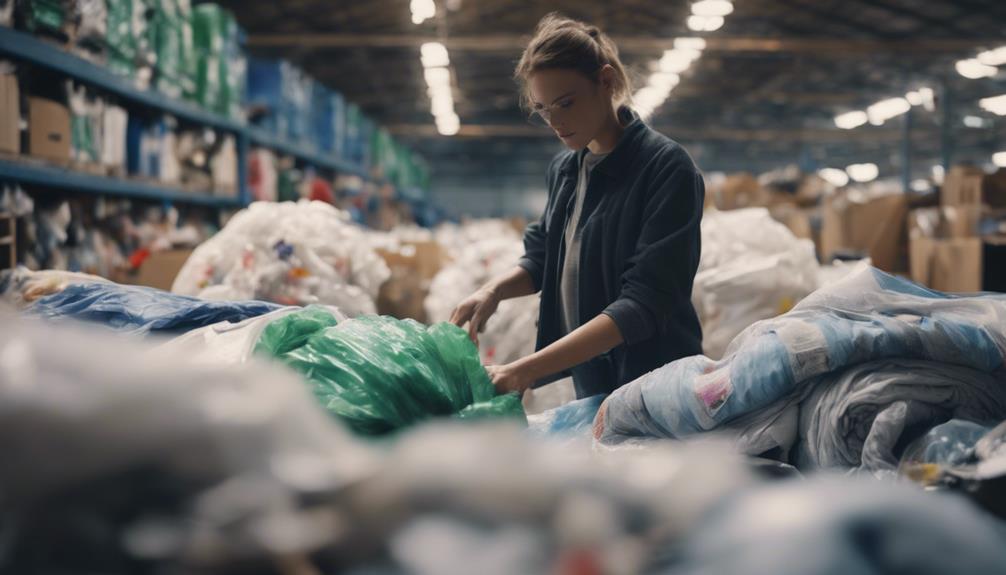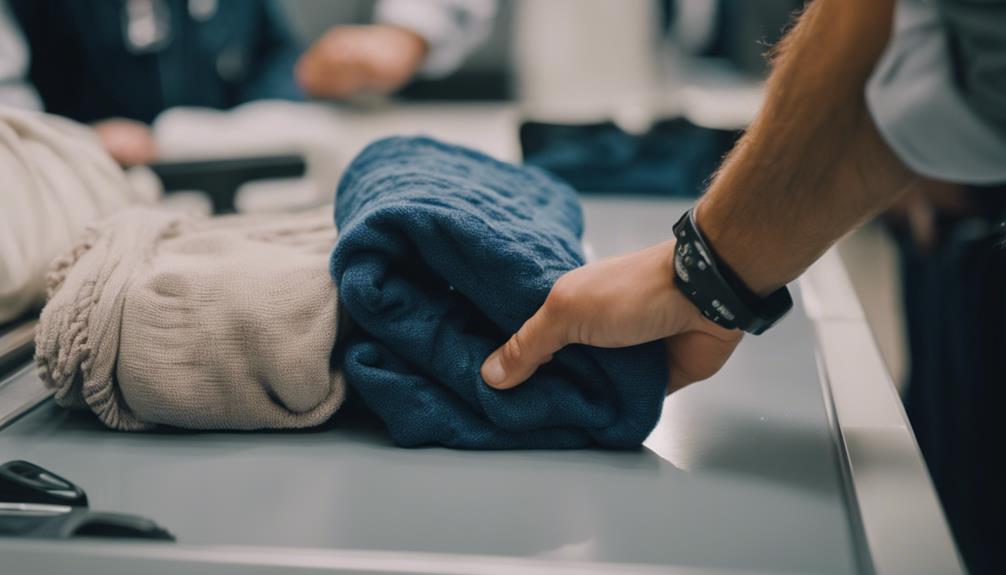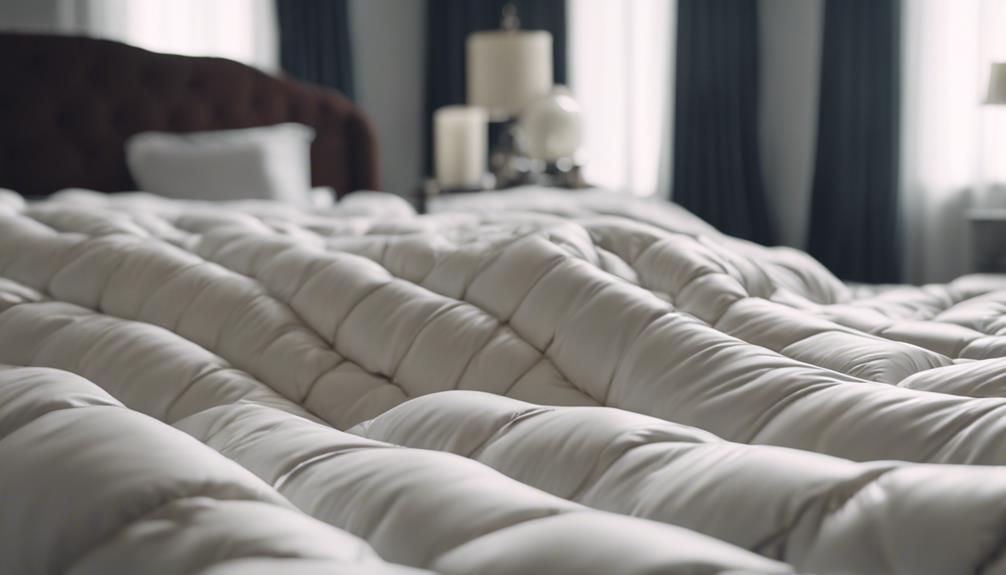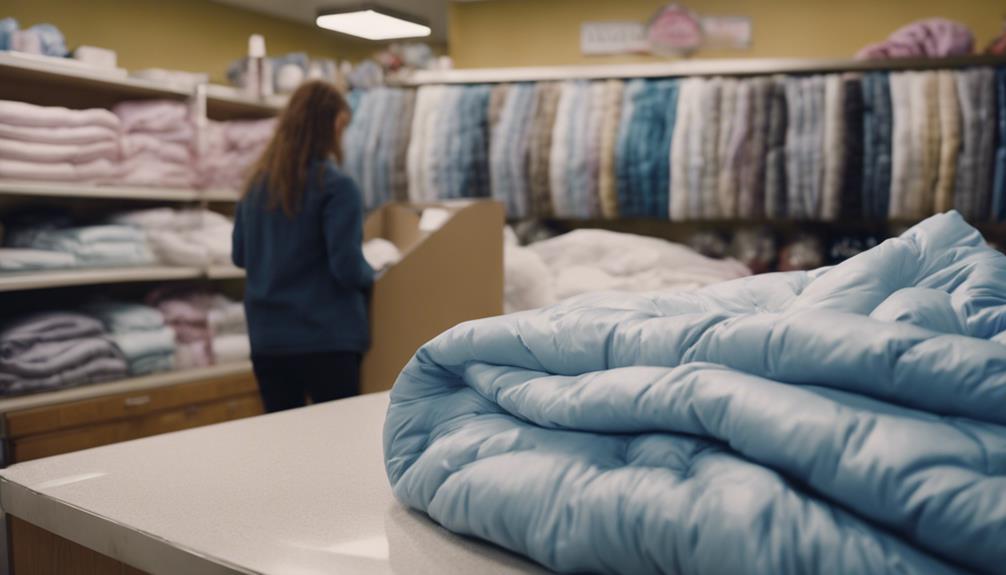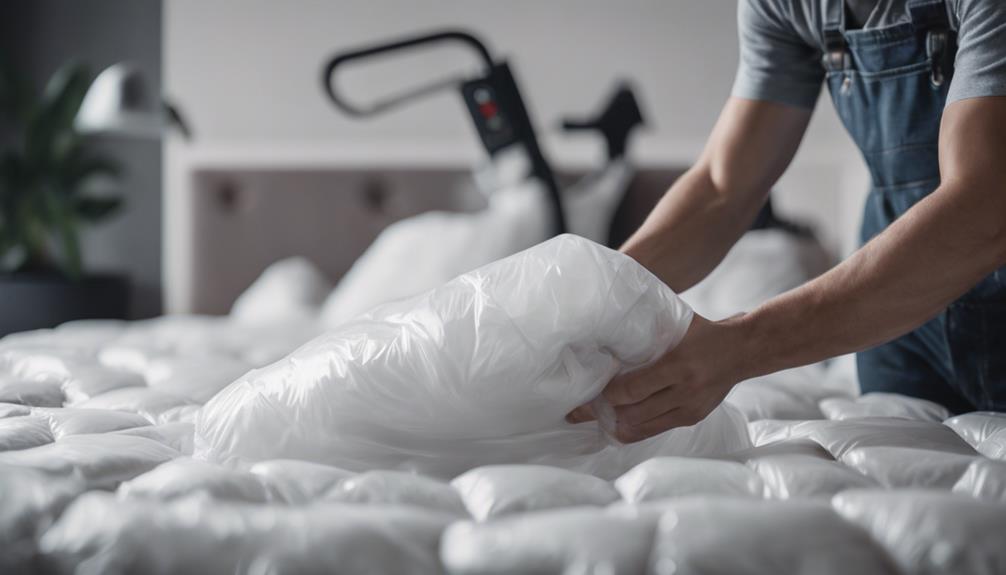Yes, down comforters can often be recycled. Look for textile recycling programs in your area for sustainable disposal options. Some recycling centers and donation facilities may accept down comforters. Certain states, like Massachusetts, have specific textile recovery programs supporting eco-friendly practices. Contact local environmental protection divisions or waste management departments for guidance. Repurposing down comforters into items like rags or composting feathers are environmentally friendly alternatives. By recycling down comforters, we reduce waste in landfills and support a circular economy. Further information on down comforter recycling and its positive environmental impacts can be found in state-specific guidelines and municipal programs.
Key Takeaways
- Some regions offer textile recycling programs for down comforters.
- Recycling centers may accept down comforters for sustainable disposal.
- Check with local municipalities or waste management for recycling options.
- Down comforter recycling reduces textile waste and promotes eco-friendly practices.
- Repurposing down comforters aligns with sustainable initiatives and reduces landfill waste.
Recycling Programs for Down Comforters
In some regions, municipalities offer recycling programs for down comforters. These programs aim to provide a sustainable disposal option for old comforters, preventing them from ending up in landfills. One key resource to look for when seeking to recycle down comforters is recycling centers. These centers specialize in textile recycling and may accept used comforters for repurposing or recycling.
When considering recycling options for down comforters, it's essential to check with your local recycling centers to see if they've specific programs in place. Some states, like Massachusetts, have dedicated textile recovery programs that accept items like comforters for recycling. By exploring similar programs in your state or county, you can find environmentally friendly ways to dispose of your old down comforters responsibly.
Remember to contact your state's environmental protection division for more information on recycling options for textiles such as down comforters. By utilizing these resources and seeking out recycling centers that specialize in textile recycling, you can contribute to a more sustainable waste management system.
Local Recycling Options for Comforters
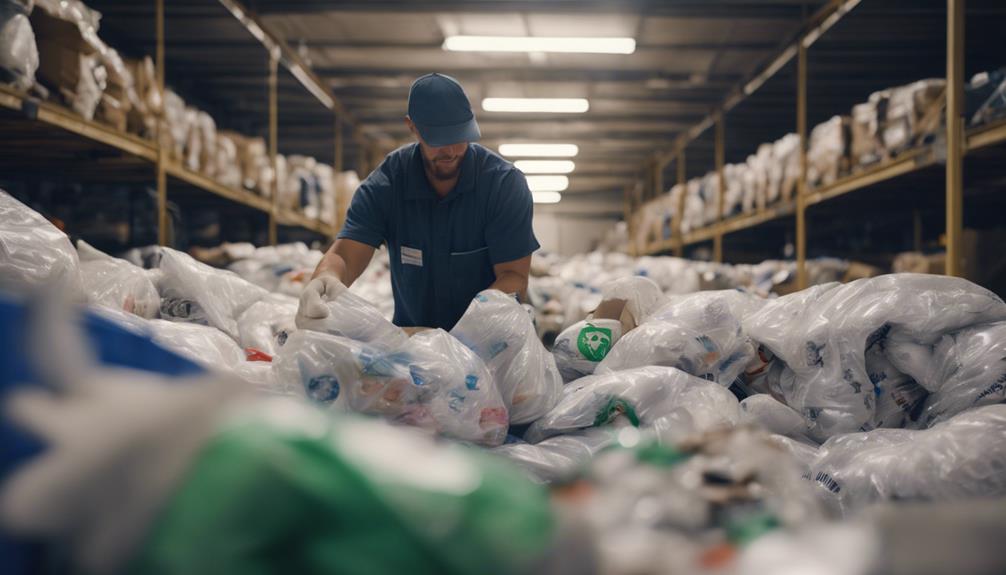
When looking for local recycling options for comforters, consider checking recycling facilities near you or donation centers that may accept these items.
These places can provide proper avenues for the disposal and recycling of old comforters.
Researching these options in your community can help guarantee that your comforters are recycled responsibly.
Recycling Facilities Near You
Finding local recycling facilities that accept down comforters can help you responsibly dispose of these bedding items. Some recycling centers, like the Salvation Army, may have specific textile recycling programs that welcome down comforters.
To locate recycling facilities near you, check with your city or county's waste management department for guidance on where to recycle comforters. You can also explore online directories or apps that list nearby recycling centers accepting bedding items for textile recycling.
Reaching out to local environmental organizations or charities can provide additional support in locating the right recycling facility for down comforters. By utilizing these resources, you can make sure that your down comforters are recycled in an environmentally friendly way.
Donation Centers for Comforters
At local donation centers like Goodwill and Salvation Army, comforters can be accepted for reuse or repurposing.
When looking to donate old comforters, consider the following options:
- Check with orphanages or nursing homes for direct donations benefiting those in need.
- Some animal shelters may accept clean comforters for bedding purposes.
- Research local textile recycling programs that handle down comforters sustainably.
- Contact charity organizations for donating comforters to support disaster relief efforts.
Finding Down Comforter Recycling Centers
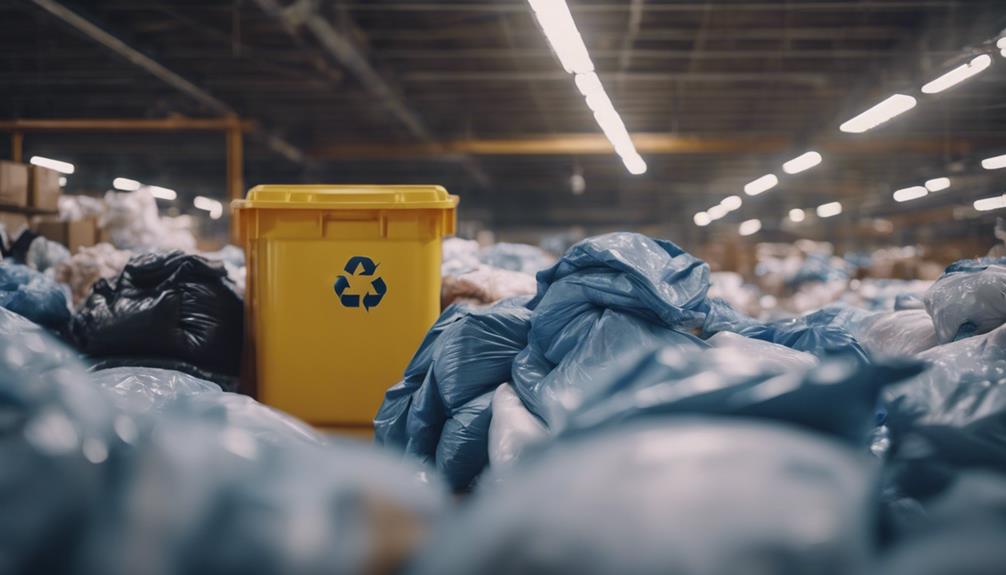
To locate down comforter recycling centers in your area, explore municipal textile recovery programs or contact local environmental protection divisions for guidance. The availability of these centers may vary depending on your region, so researching nearby options is crucial. Some municipalities offer specific textile recovery programs that include down comforters in their recycling efforts. By reaching out to local environmental protection divisions, you can get valuable information on where to recycle your comforter responsibly.
In addition, certain states like Massachusetts have established programs dedicated to recycling used textiles, including down comforters. These state-specific initiatives aim to reduce textile waste and promote environmentally friendly disposal methods. If you reside in a state with such programs, it's worth looking into their guidelines for recycling down comforters.
State-Specific Textile Recovery Programs
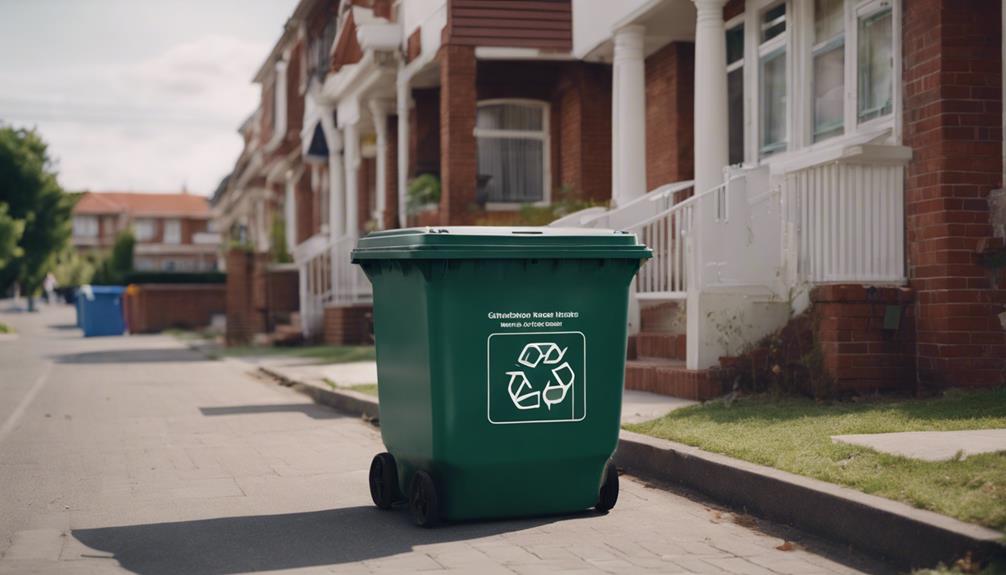
State-specific textile recovery programs, such as those in Massachusetts, offer collection locations for used textiles like down comforters. These programs facilitate the recycling process, ensuring that items like bedding are diverted from landfills.
Collection Locations
In Massachusetts, individuals can easily locate collection locations for down comforters through the state's textile recovery programs. Here are some tips to help you find the nearest collection points:
- Check with local municipalities for specific recycling options.
- Contact your state's environmental protection division for information on recycling programs.
- Search online for nearby recycling centers that specialize in textile disposal.
- Explore state or county programs similar to Massachusetts' initiatives for down comforter recycling.
These steps will guide you towards the right places to drop off your down comforters for recycling, ensuring they're properly handled and repurposed in an environmentally friendly manner.
Recycling Process
Our state's textile recovery programs efficiently handle the recycling process for down comforters, ensuring their proper disposal and repurposing. When dealing with a worn-out comforter, it's important to check with your state's environmental protection division for specific recycling options.
Some states, like Massachusetts, have dedicated textile recovery programs that accept used textiles, including down comforters. Additionally, recycling centers in various regions may offer programs tailored for disposing of down comforters specifically.
To find the most suitable option for your needs, research online for state or county-specific recycling programs that cater to textile and bedding disposal. It's vital to verify if your municipality has designated facilities or guidelines for recycling down comforters to contribute to a more sustainable environment.
Massachusetts Textile Recycling Initiatives
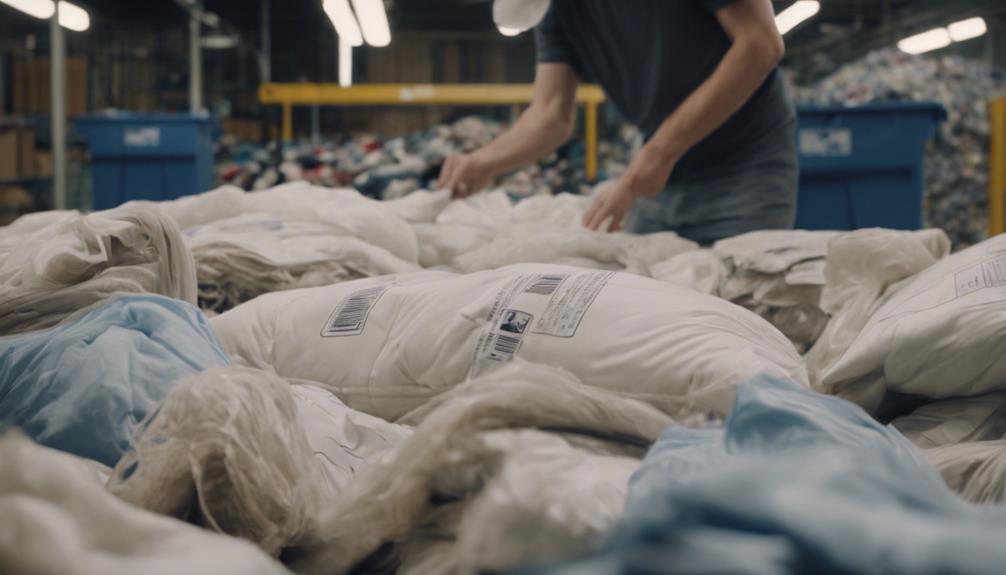
Massachusetts actively supports textile recycling initiatives to combat textile waste, including programs for down comforters. The state encourages residents to participate in recycling programs to reduce environmental impact.
Here are some key points about Massachusetts textile recycling initiatives:
- The state has established textile recovery programs to handle used textiles, such as down comforters.
- Residents can easily find nearby recycling centers to responsibly dispose of down comforters and other textiles.
- Massachusetts aligns with eco-friendly efforts by promoting sustainable practices for textile disposal.
- For those looking to recycle down comforters specifically, checking with the state's environmental protection division can provide guidance on proper disposal methods.
Guidelines for Recycling Down Comforters
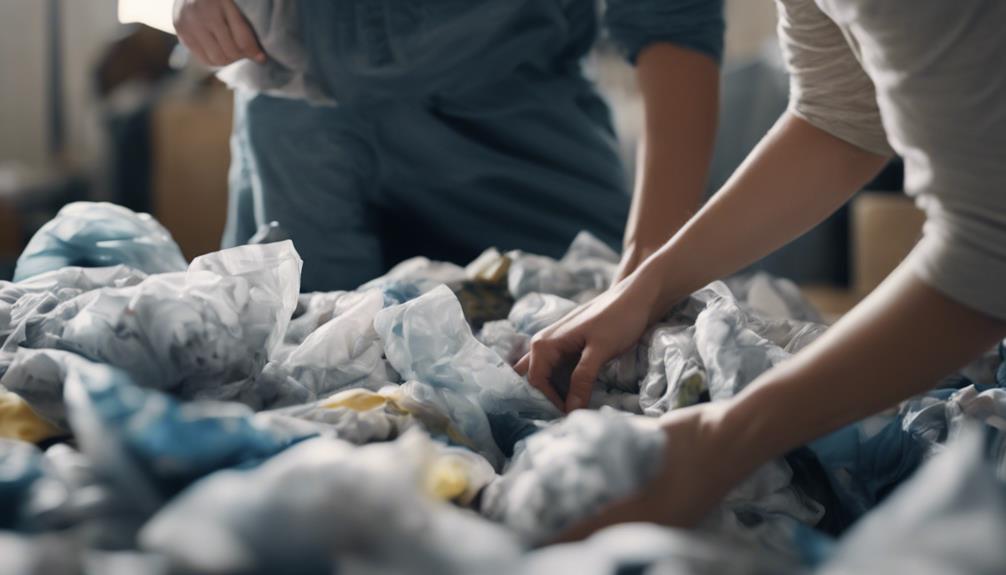
When recycling down comforters, look for local programs that accept them for disposal. Check with your state's environmental protection division or search for textile recovery options nearby.
Responsible recycling of down comforters helps in eco-friendly disposal and contributes to textile recovery initiatives.
Down Comforter Recycling Options
For those looking to recycle down comforters, exploring local recycling programs or centers is a practical first step. When seeking options for recycling down comforters, consider the following:
- Check Municipal Recycling Programs: Some cities offer specific programs for down comforter recycling.
- Contact State Environmental Agencies: State environmental protection divisions may provide information on recycling options.
- Explore Textile Recovery Programs: States like Massachusetts have initiatives for recycling used textiles, including comforters.
- Search for Recycling Centers: Look for nearby centers that accept down comforters for responsible disposal.
Eco-Friendly Disposal Methods
Exploring local recycling programs or centers is a practical step towards eco-friendly disposal methods for recycling down comforters. Some states like Massachusetts offer textile recovery programs that give down comforters a new life. Check with your state's environmental protection division for specific recycling options available.
Many municipalities also accept down comforters for recycling, promoting sustainable waste management practices. Look for nearby recycling centers that specialize in handling textile items like down comforters for eco-friendly disposal.
Additionally, consider reusing down comforters by repurposing them into rags or utilizing the down feathers in compost, offering environmentally friendly alternatives. By choosing these methods, we can contribute to reducing waste and giving down comforters a second chance at usefulness.
Eco-Friendly Disposal of Comforters
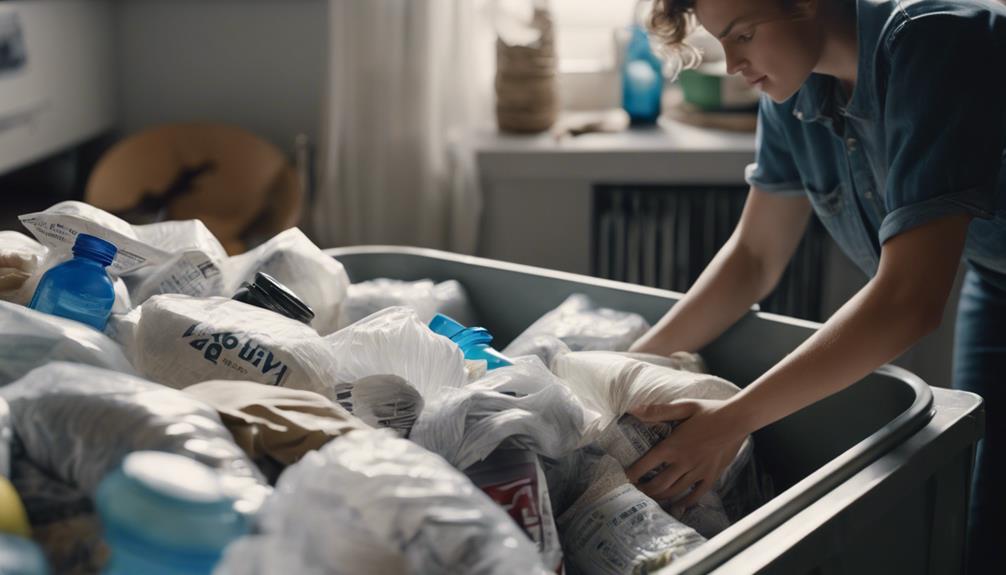
To dispose of comforters in an eco-friendly manner, recycling down or composting them can greatly reduce textile waste and promote sustainability. Recycling down comforters not only helps in reducing waste in landfills but also contributes to a circular economy. Composting down from old comforters offers a sustainable disposal method that aligns with eco-friendly initiatives.
Repurposing used comforters and other textiles can play a significant role in environmental conservation efforts. By opting for sustainable disposal practices like composting, individuals can actively participate in promoting a greener planet. Recycling down comforters can have positive environmental impacts by effectively decreasing textile waste, making it a responsible choice for those looking to minimize their carbon footprint.
- Recycling down comforters reduces waste in landfills and promotes a circular economy.
- Composting down from old comforters can be a sustainable disposal method.
- Repurposing old textiles like comforters contributes to environmental conservation efforts.
- Sustainable disposal practices like composting align with eco-friendly initiatives.
Sustainable Comforter Recycling Practices
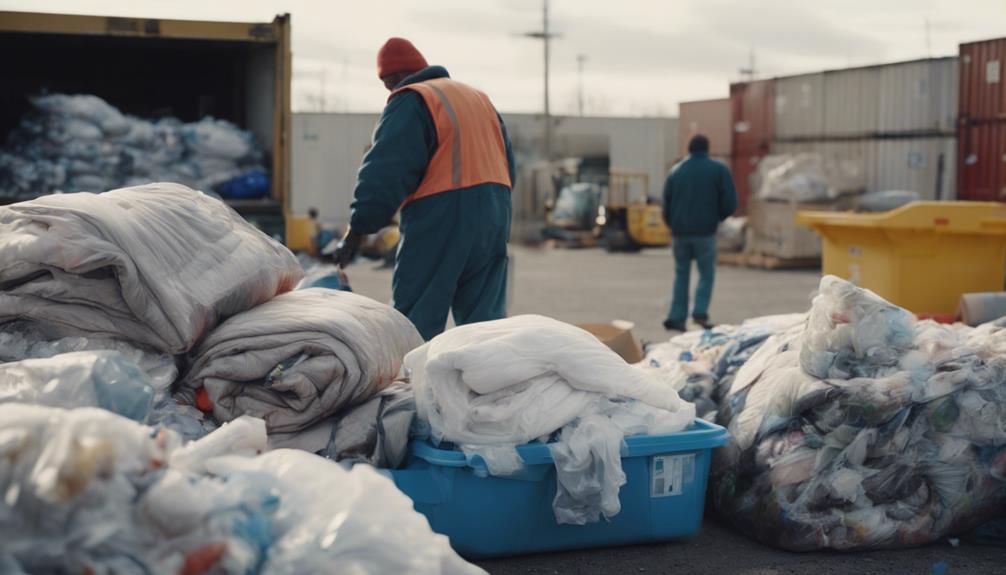
When considering sustainable comforter recycling practices, researching local recycling options is essential to guarantee proper disposal of down comforters. Some municipalities offer recycling programs for down comforters, but availability varies by region. To find out about recycling options in your area, check with your state's environmental protection division.
For example, states like Massachusetts have textile recovery programs specifically designed to handle used textiles such as down comforters. Research nearby recycling centers or programs that accept down comforters for environmentally friendly disposal. By looking for similar recycling initiatives in your state or county, you can make sure that old down comforters are recycled properly.
If you have any doubts about how to recycle your down comforter, let us know, and we can help guide you towards the most suitable recycling options available.
Down Comforter Recycling Considerations
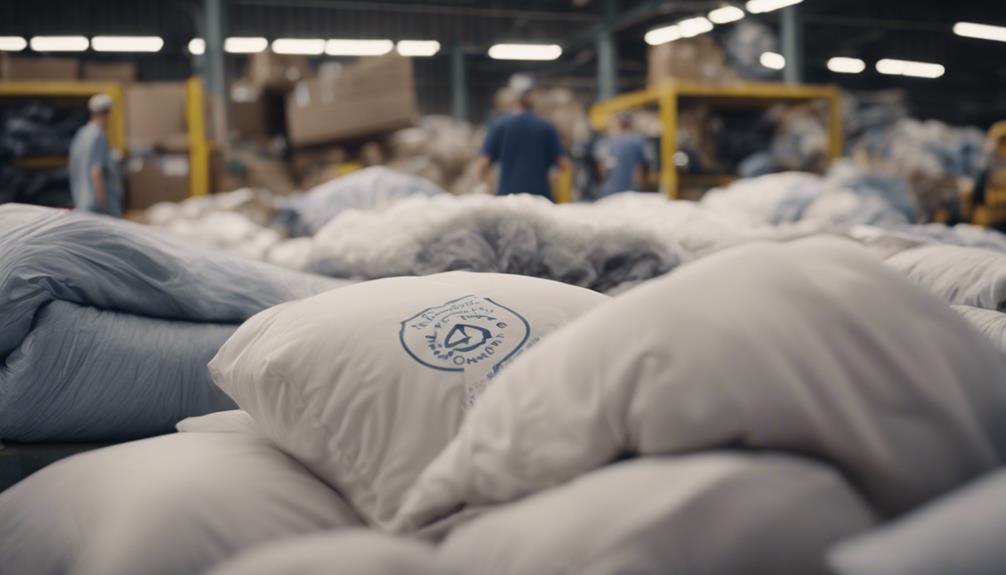
Given the environmental impact of down comforters, it's essential to assess the practicality and effectiveness of recycling methods available in your local area. Some municipalities offer recycling programs for down comforters, so check with your state's environmental division for recycling options.
States like Massachusetts have textile recovery programs for used textiles, including down comforters. Additionally, search for nearby recycling centers specializing in comforter disposal, as they may have specific protocols for down comforters.
When considering down comforter recycling, it's also beneficial to look for similar programs in your state or county that handle recycling for other items like sleeping bags. By exploring these avenues, you can make a more informed decision on how to responsibly recycle your down comforters, contributing to environmental sustainability.
Environmental Impact of Comforter Recycling
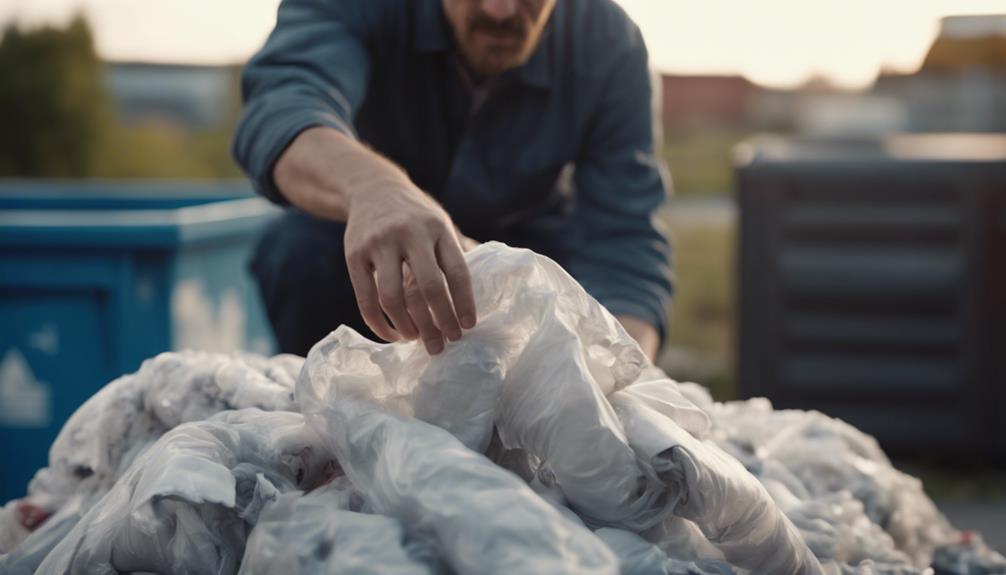
Considering the importance of recycling down comforters, it's crucial to reduce textile waste and promote sustainable disposal practices. Comforter recycling plays a vital role in decreasing the amount of fabric ending up in landfills, thus contributing to a circular economy.
Repurposing old textiles like comforters is fundamental in sustainable disposal efforts. Composting down from old comforters offers an environmentally friendly way to dispose of them. Opting for sustainable methods such as recycling down comforters allows us to align with eco-friendly initiatives and minimize our environmental impact. These practices have positive effects on the environment by reducing textile waste.
When comforters are recycled, they're diverted from landfills, preventing them from taking up space and contributing to pollution. Overall, the environmental impact of comforter recycling is significant in promoting a more sustainable approach to textile disposal. It's crucial to keep these factors in mind when deciding how to dispose of old comforters responsibly.
Frequently Asked Questions
What Can You Do With Old Down Comforters?
When dealing with old down comforters, there are several ways to repurpose them. They can be cut into rags for cleaning, used in compost for soil enrichment, or repurposed for kids' playrooms as fort-building material.
Additionally, the filling from old down comforters can enhance pets' bedding areas or be used for creating capes, costumes, or insulation for curtains. These creative options help reduce waste and give new life to old comforters.
Can Down Duvets Be Recycled?
Yes, down duvets can usually be recycled in areas with textile recovery programs. Check with local environmental agencies for specific recycling options.
In some states, like Massachusetts, there are dedicated programs for recycling textiles, including down comforters. Locate nearby recycling centers that accept down duvets for eco-friendly disposal.
Explore similar programs in your state or county to guarantee responsible recycling of down comforters.
When Should You Throw Away a Down Comforter?
When is it time to toss out a down comforter? Signs like clumped feathers, loss of comfort, and a worn-out cover indicate it's time to replace it. Also, if you notice moldy odors, yellow stains, or if it feels too heavy, it's best to say goodbye.
Reduced fluffiness, a rough texture, or less warmth are also indicators it's time for a new one. Regular cleaning and maintenance can help extend its lifespan.
Can I Compost a Down Comforter?
Yes, you can compost a down comforter. Composting a down comforter is a sustainable way to dispose of it. Down from old comforters can provide nitrogen for composting, reducing waste in landfills.
Repurposing down comforters aligns with eco-friendly practices and contributes to a circular economy. So, if you're looking for an eco-conscious way to get rid of your old down comforter, composting is a great option.
Conclusion
To sum up, when contemplating the environmental impact of disposal, it's essential to opt for eco-friendly practices.
Remember, one person's trash is another person's treasure.
So, let's do our part in keeping our planet clean and green by recycling our comforters responsibly.
